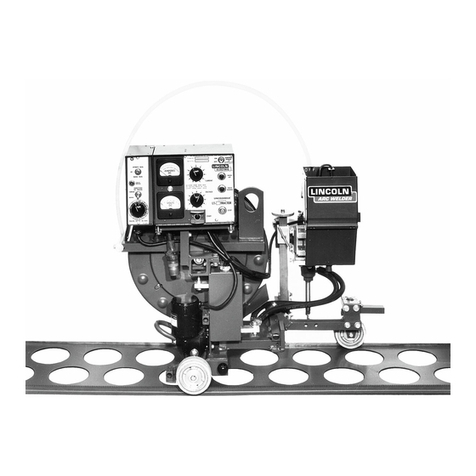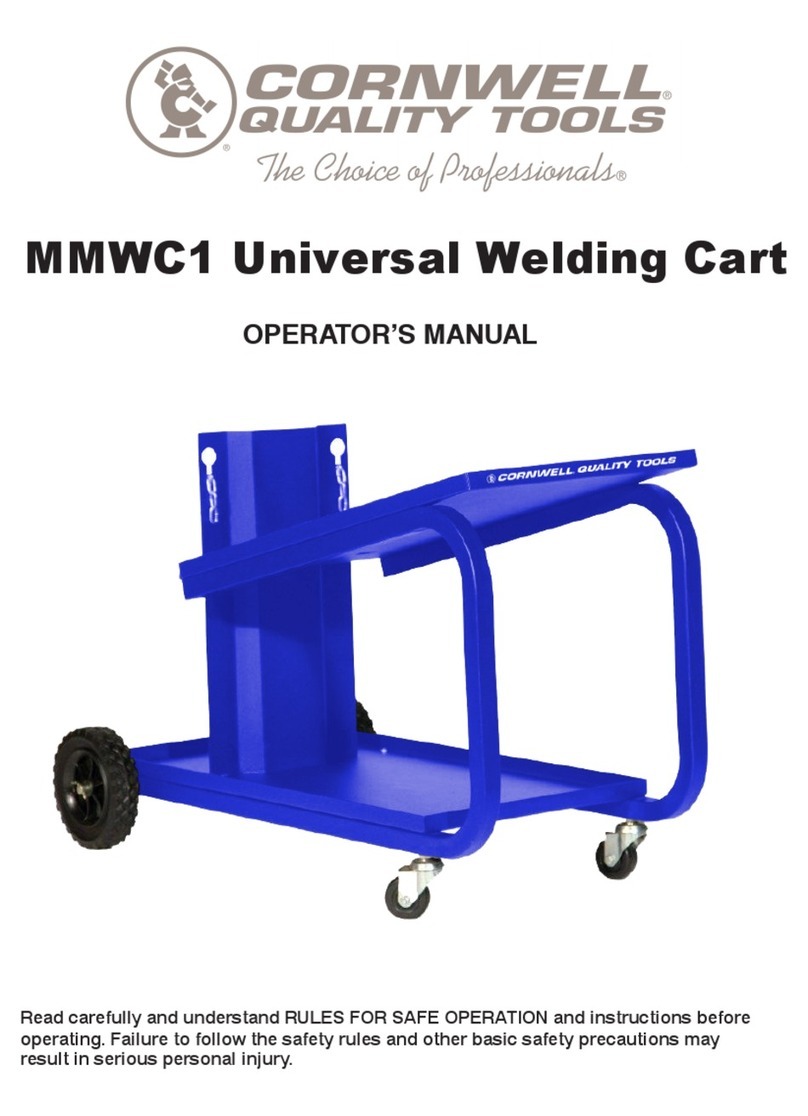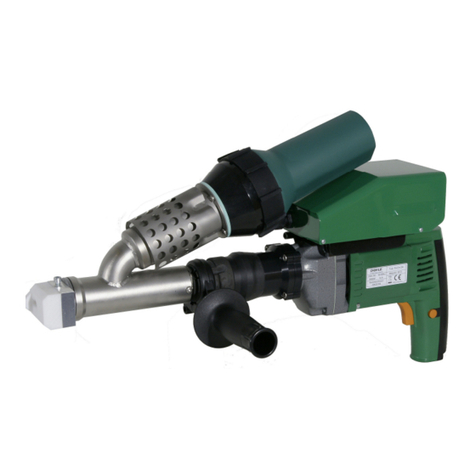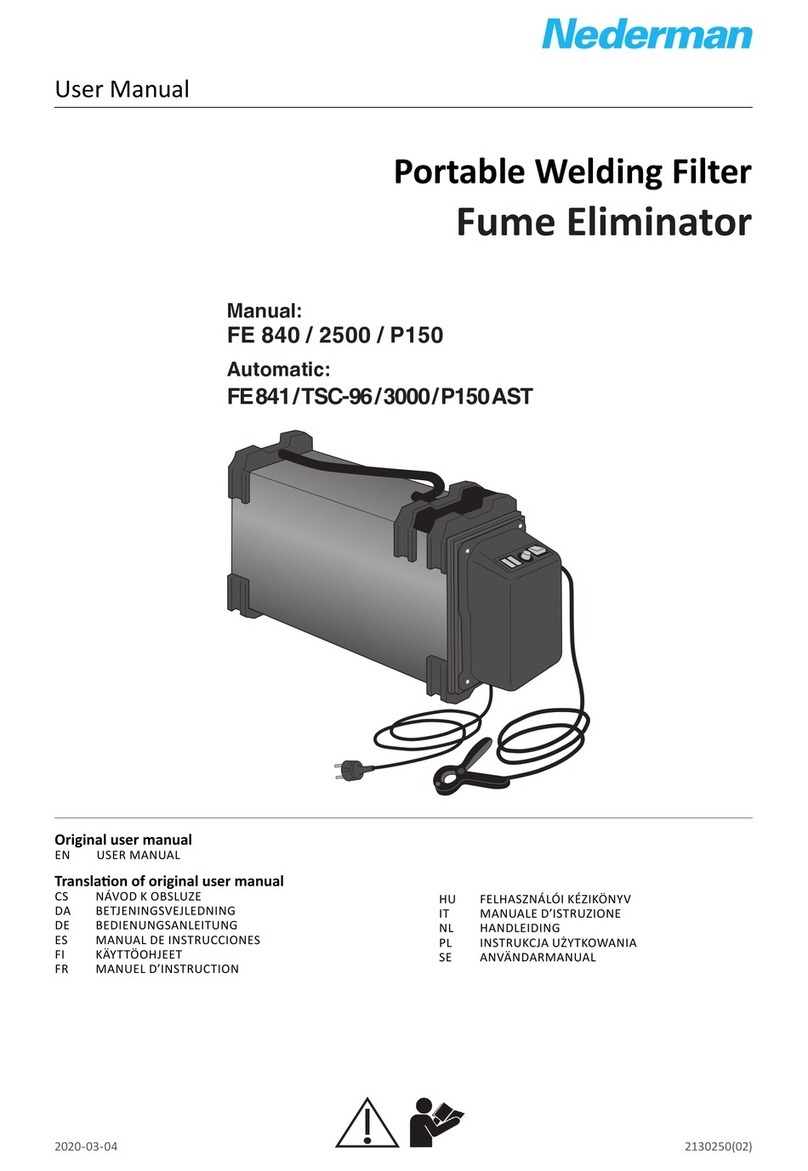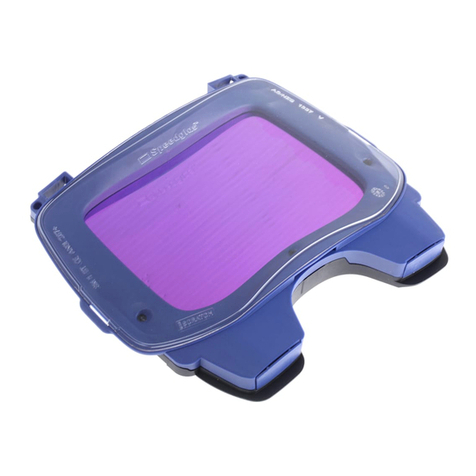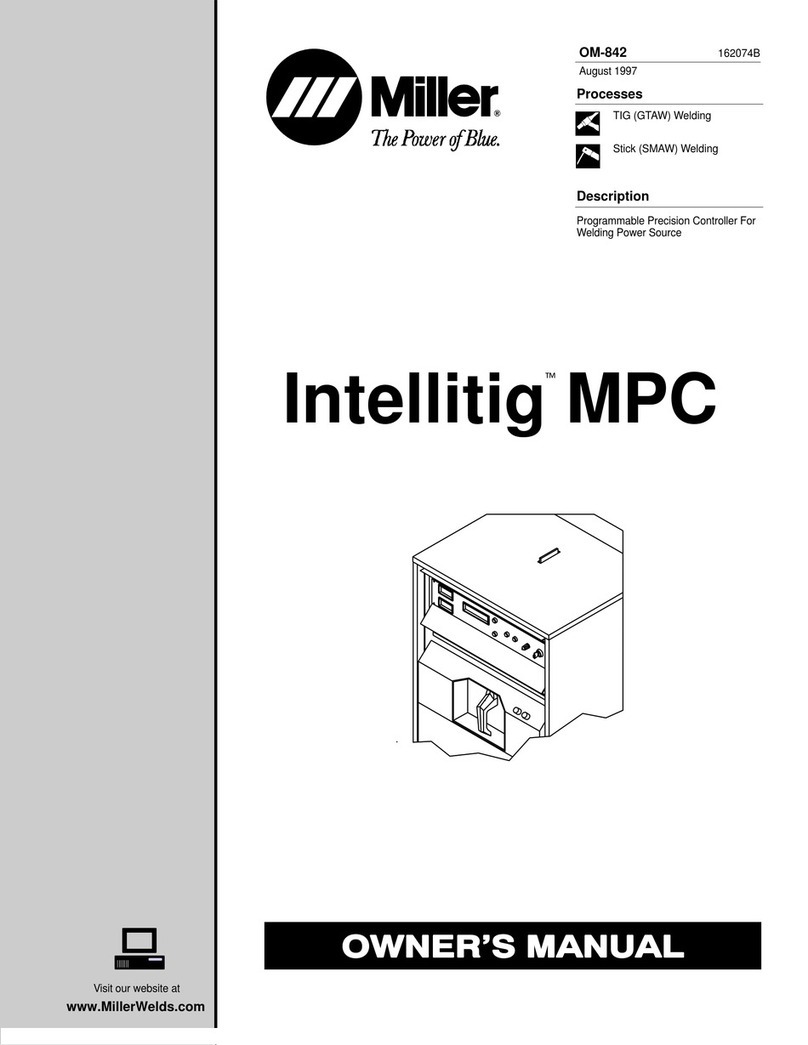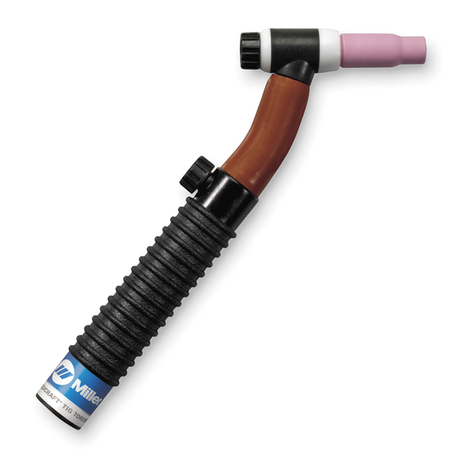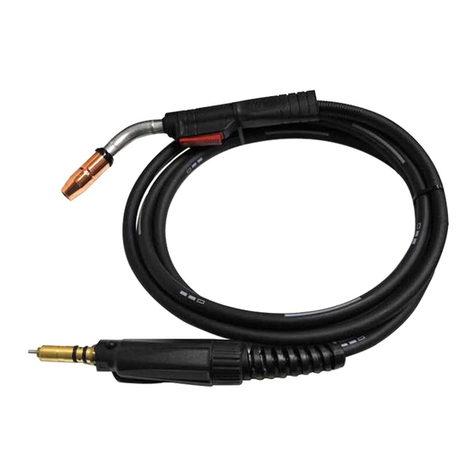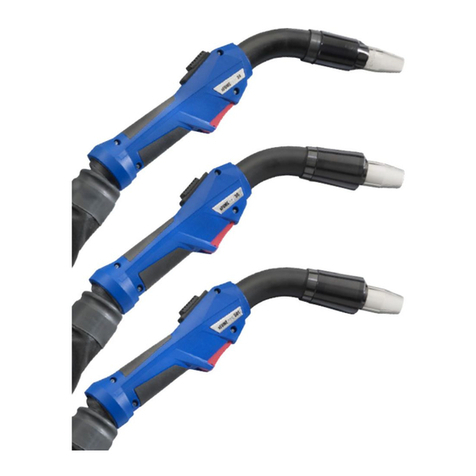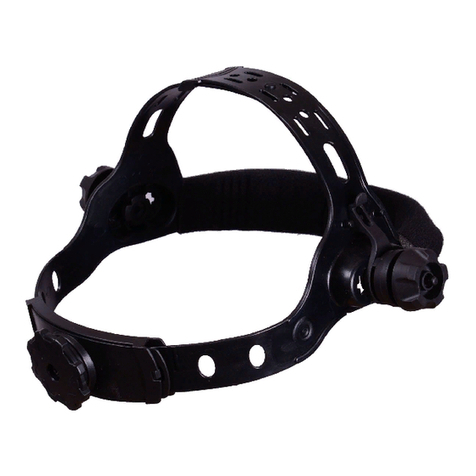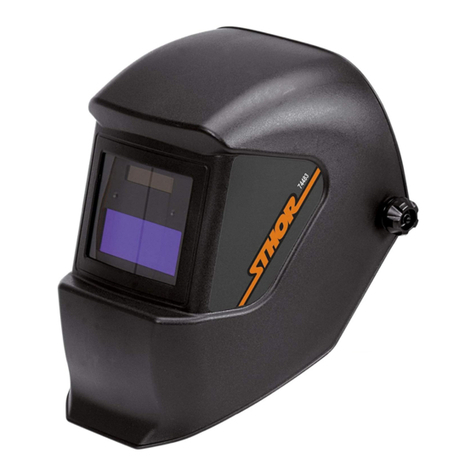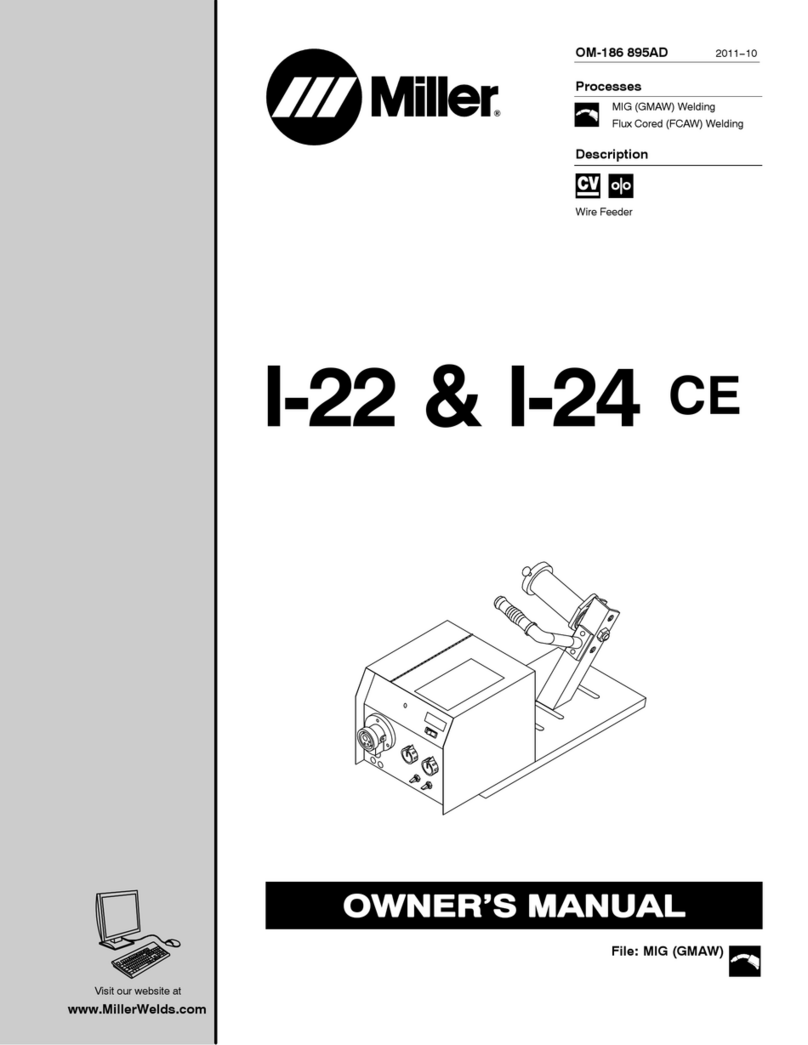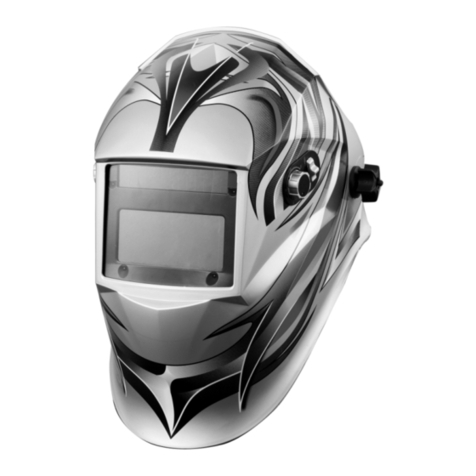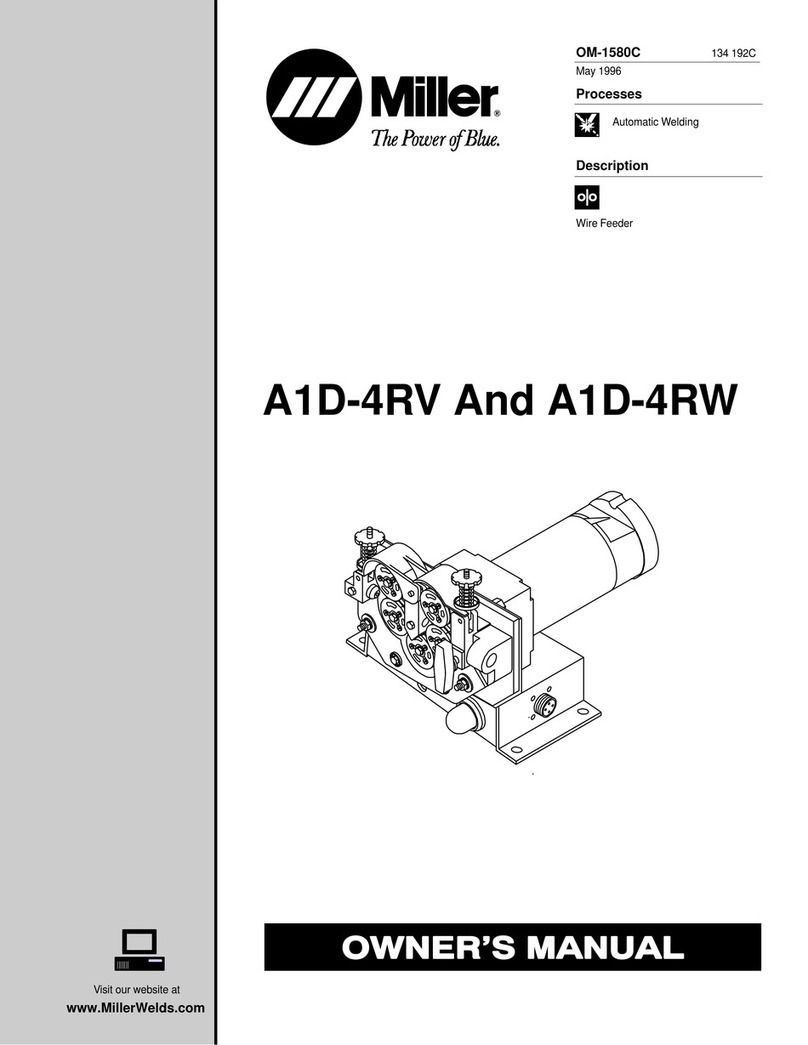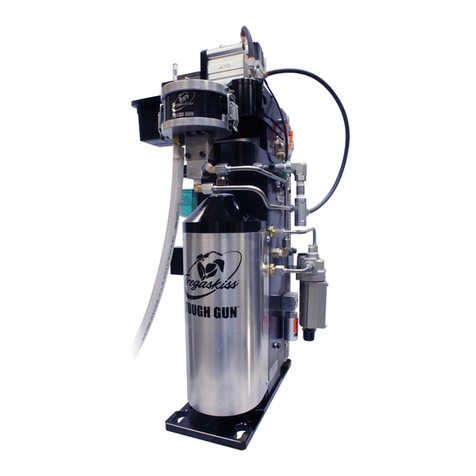Tool Shed TSWH5 User manual

23
OPERATION MANUAL OPERATION MANUAL
WWW.THETOOLSHED.CO.NZWWW.THETOOLSHED.CO.NZ
TABLE OF CONTENTS PRODUCT DETAILS
Product Model ToolShed Auto Darkening Welding
Helmet with PAPR
Product Code TSWH5
DISTRIBUTED BY:
Product Details 3
Specications 4
Product Identication 5
Safety Guidelines 6
PAPR Assembly 11
PAPR Operation 13
Helmet Operation 16
PAPR Cleaning & Storage 18
Helmet Maintenance & Storage 19
PAPR Troubleshooting 20
Helmet Troubleshooting 21
Note:
This manual is for your reference only. Due to the continuous improvement
of the ToolShed products, changes may be made at any time without
obligation or notice.
Warranty:
This product may be covered under The ToolShed warranty. For more information,
see our Terms & Conditions at www.thetoolshed.co.nz
Thank You
For the purchase of this ToolShed product. We try our hardest to supply customers like
you with the best quality products available, at the best price possible. We cant wait to
continue working together in the future.
Please contact us for any servicing, replacement parts, or questions you might have
about your ToolShed product by visiting our website, or calling: 0800 948 665.

45
OPERATION MANUAL OPERATION MANUAL
WWW.THETOOLSHED.CO.NZWWW.THETOOLSHED.CO.NZ
SPECIFICATIONS PRODUCT IDENTIFICATION
Air Flow Low Speed: 150 LPM
High Speed: 180 LPM
Standard Air Filter Filter Assembly Consisting of Foam Pre-Filter
& HEPA Filter
Operation Temperature -5°C – 55°C
Storage Temperature -10°C – 50°C
Storage Humidity ≤90% R.H.
Battery Type Rechargeable Lithium
Battery Charging Time Approximately 3 Hours
Battery Life Approximately 500 Charges
Run Time Low Speed: 6 hours
High Speed: 4 hours
Weight 1.1 KG
Viewing Area 98mm x 55mm
Cartridge Size 125mm x 102mm x 18mm
ARC Sensor 4
UV/IR Protection UP to Shade DIN 16 At All Times
Light State DIN 4 (Grind)
Dark State External Variable Shade DIN 5–8 , 9–13
Switch Time 1/30,000 Secs from Light To Dark
TIG AMP Rating DC≥5, AC≥5
Operating Temp. -5°C – 55°C
Storage Temp. -20°C – 70°C
1Helmet Body
2Headgear Top Adjustment
3Headgear Tightness Adjusting Knob
4Headgear Angle & Distance Adjusting Knob
5Front Cover Lens
6Battery Compartment
7Delay Time Control
8Sensitivity Control
9Filter Cartridge
10 LCD Screen
11 Weld & Grind Control
12 Variable Shade Control
13 Inside Cover Lens
14 Filter Fixture Holder
PAPR System
Welding Helmet

67
OPERATION MANUAL OPERATION MANUAL
WWW.THETOOLSHED.CO.NZWWW.THETOOLSHED.CO.NZ
SAFETY GUIDELINES SAFETY GUIDELINES
• DO NOT use the power tool or machinery
in raining conditions or wet areas where
the power tool or machinery could get
wet. Water in the power tool or machinery
can lead to electric shock.
• Only use the power tool or machinery
when the plug correctly matches the
power outlet. Modifying plugs greatly
increases the risk of electric shock.
• Keep the power cord away from anything
that could damage it such as sharp edges,
moving parts or heat. A damaged power
cord increases the risk of electric shock.
• Only operate outdoors with the use of an
outdoor extension lead. Not all extension
leads are suited to outdoor use and using one
which is not can greatly increase the risk of
electric shock.
• Avoid body contact with grounded or
earthed surfaces. Surfaces such as radiators,
ranges, pipes, and refrigerators can increase
the risk of electric shock due to your body
being earthed or grounded.
WARNING
Electric shock can cause serious injury
or, in some cases be fatal.
Electrical Safety
• Always wear personal protective equip-
ment (PPE). Eye protection, ear protection,
dust masks, and other protective equipment
will help to reduce the risk of personal injury
or long-term illnesses.
• Dress appropriately. DO NOT wear loose
clothing that can get caught in moving
parts. Keep hair, loose clothing, jewellery, and
READ ALL SAFETY WARNINGS &
INSTRUCTIONS. Failure to follow
instructions and warnings could lead to
serious injury, electric shock, or re.
anything else that could be of risk, away from
moving parts in the machine, or they could be
caught therein.
• Always remain alert and DO NOT operate
power tools or machinery under the
inuence of any substances like alcohol
or drugs, including prescription medica-
tions. Lack of focus could lead to injury or
accident while operating these power tools
and machinery.
• Always ensure proper footing and
balance. Overreaching can lead to slipping
and falling which can result in injury or acci-
dent.
• Ensure the power switch is in the OFF
position before connecting any battery,
or power source to the power tool or
machinery. This can cause injury as tools
and machinery can suddenly re incidentally
when live, causing accidents.
• Use all provided dust collection and
extraction attachments, if included. This
equipment, along with the use of PPE dust
masks, can help keep you safe from dust, and
keep your work site clear from hazards.
• Ensure loose parts such as wrenches
or adjusting keys are removed before
starting the power tool or machinery.
WARNING
Work Area Safety
Personal Safety
• Ensure that your work area is kept well lit
and clean. Lack of visibility and clutter greatly
increase the risk of accident when using tools.
• Keep bystanders, pets, and children clear
when operating a power tool or machine.
They can cause distraction or risk injury to
themselves.
• Ensure you are not operating the power
tool or machinery in the presence of dust,
liquids, ammable gases, or anything
that creates an explosive atmosphere.
Power tools and machinery can create sparks
which can lead to ignition and re hazards in
working environments.
Service
• Have your tools and machinery serviced
at The ToolShed with ToolShed replace-
ment parts. This will ensure that the safety of
the power tool or machine is maintained.

89
OPERATION MANUAL OPERATION MANUAL
WWW.THETOOLSHED.CO.NZWWW.THETOOLSHED.CO.NZ
SAFETY GUIDELINES SAFETY GUIDELINES
ARC Rays can burn eyes and skin. ARC
Rays from the welding process produce
intense visible and invisible (ultraviolet
and infrared) rays that can burn eyes
and skin. Sparks y o from the weld.
Welding helmets do not provide
unlimited eye, ear, and face protection.
Welding produces fumes and gases.
Breathing these fumes and gases can be
hazardous to your health.
WARNING
WARNING
WARNING
Welding Helmet Specic Safety
• Only qualied persons should install, main-
tain, and repair this unit.
• During operation, keep everybody, especially
children and pets, away.
• Read and understand the Material Safety Data
Sheets and the manufacturers instructions for
metals, consumables, coatings, cleaners, and
degreasers.
• Work in a conned space only if it is well venti-
lated, or while wearing an air-supplied respi-
rator. Always have a trained watch-person
nearby. Welding fumes and gases can displace
air and lower the oxygen level causing injury
or death. Be sure the breathing air is safe.
• Do not weld in locations near degreasing,
cleaning, or spraying operations. The heat and
rays of the arc can react with vapours to form
highly toxic and irritating gases.
• Do not weld on coated metals such as galva-
nised, lead, or cadmium plated steel, unless
the coating is removed from the weld area,
the area is well ventilated, and while wearing
an air-supplied respirator. The coatings and
any metals containing these elements can
give o toxic fumes if welded.
• Respirator (PAPR) use can be hazardous.
• The powered air purifying respirator (PAPR)
helps protect the user from specic airborne
contaminants but must be used correctly to
be fully eective. Have an industrial hygienist
test the air in your facility to ensure the PAPR
provides adequate protection from contami-
nants in your environment.
• Follow all applicable EN/ANSI/CSA/AS&NZS,
and other regulatory guidelines pertaining to
the use of respirators.
• Do not use the powered air purifying respi-
rator when there is danger of re or explosion.
• Do not use the powered air purifying respi-
rator in windy conditions or negative pressure.
The PAPR could draw in contaminants from
the outside air.
• Do not use the powered air purifying respi-
rator without a properly installed spark guard
cover. Without the spark guard cover, welding
sparks may ignite the lter or damage the
lters and allow unltered air into the helmet.
• The powered air purifying respirator does
not supply oxygen. Use the respirator only
in atmospheres for which it is EN/ANSI/CSA/
AS&NZS approved. Do not use the respirator
where oxygen levels are 19.5% or lower,
where contaminant levels are unknown or
are immediately dangerous to life or health,
or where contaminant levels exceed the respi-
rator specications.
• Do not enter a hazardous area until you are
sure the respirator equipment is correctly
assembled, working properly, and properly
worn.
• Before each use, inspect the respirator equip-
ment for damage and verify it is providing an
adequate volume of air.
• Do not use the powered air purifying respi-
rator without all lter components or with the
blower turned o. Hazardous levels of oxygen
and carbon dioxide may accumulate in the
helmet.
• Always wear the powered air purifying respi-
rator when entering a contaminated area. Do
• Wear a welding helmet tted with a proper
lter shade to protect your face and eyes
when welding or watching the operation.
• Wear approved safety glasses with side shield
under your helmet.
• Use protective screens or barriers to protect
others from ash, glare, and sparks: warn
others not to watch the arc.
• Wear protective clothing made from durable,
ame-resistant material, and foot protection.
• Before welding, adjust the auto-darkening
lens sensitivity settings to meet the applica-
tion.
• Stop welding immediately if the auto-dark-
ening lens does not darken when the arc is
struck.
• Keep your head out of the fumes. Do not
inhale the fumes.
• If using inside, ventilate the area and/or use
local forced ventilation at the arc to remove
welding fumes and gases.
• If ventilation is poor, wear an approved
air-supplied respirator.
• Use impact resistant safety spectacles or
goggles, and ear protection at all times when
using this welding helmet.
• Do not use this helmet while working with or
around explosives or corrosive liquids.
• Do not weld in the overhead position while
using this helmet.
• Inspect the auto-lens (lter) frequently. Imme-
diately replace any scratched, cracked, or
pitted cover lenses or auto-lenses.
• Wear approved ear protection if the noise
level is high.
Table of contents


